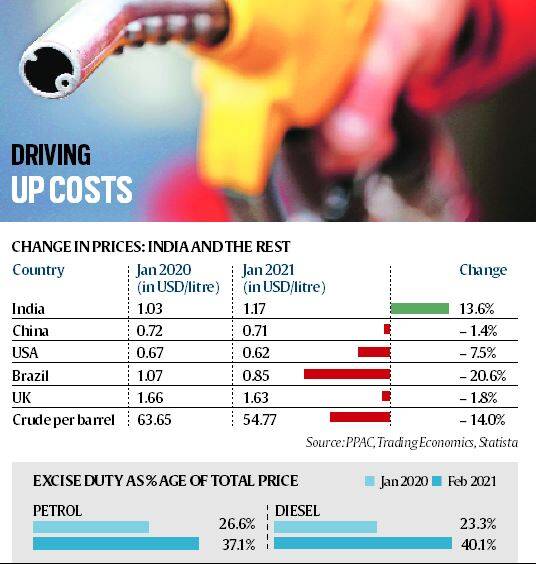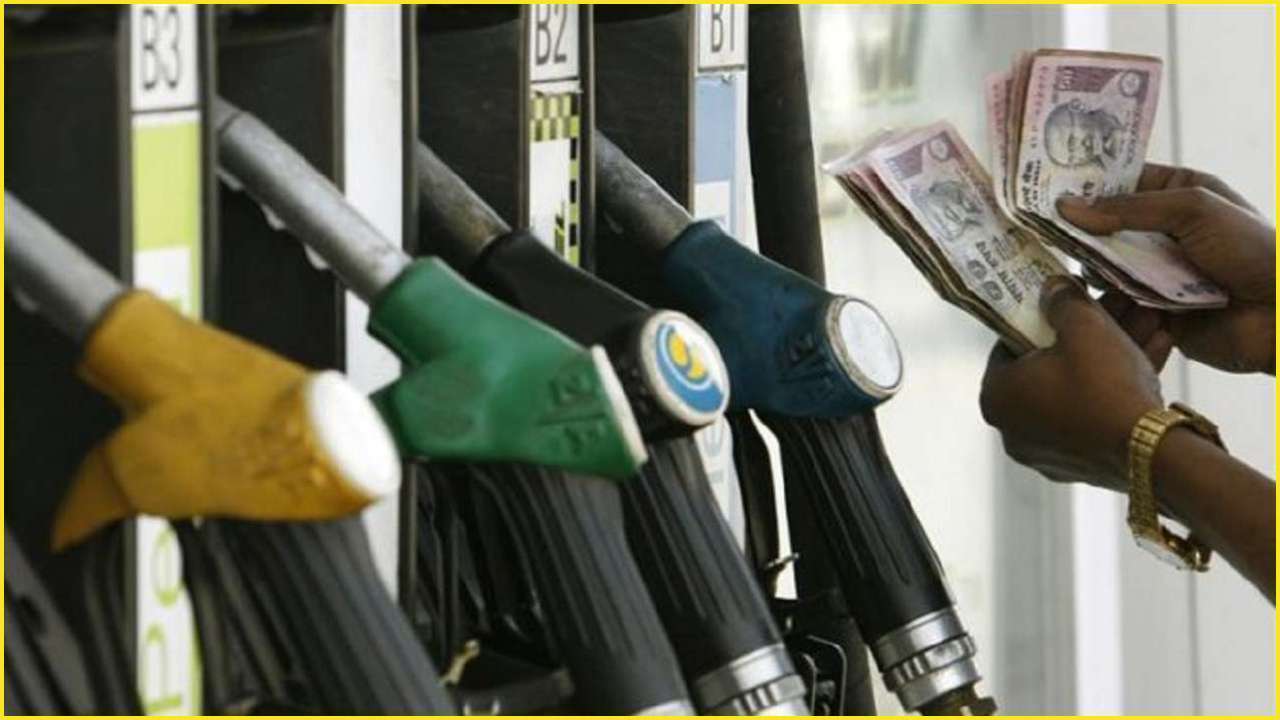Petrol in India is now retailing above Rs. 90 per liter in all major cities like Delhi. Petrol has already breached Rs.100 mark in some major states like Madhya Pradesh and Rajasthan.
India’s record spike in prices of gasoline and diesel are the newest threat to the economy’s nascent recovery. High taxes on retail fuel risk fanning inflation and driving a wedge between the objectives of fiscal and monetary policymakers.

The current situation is so debilitating that people are walking extra miles to buy cheaper gasoline. Certain credible resources state that some people in Bihar’s Araria and Kishanganj region are crossing the borders to buy cheaper petrol from Nepal. In various ways, the hike in the fuel’s prices have the potential of unraveling India’s economic gains made in the months of January and February.
It is no news that the economic recovery in India was based on strong consumer demand due to its prolonged festive season and also due to the pent-up demand. It would be rational to state that consumer demand has been driving the battered economy towards recovery. But recently the pattern of record high petrol and diesel prices have a potential of severely curtailing consumer demand in India.
How fuel prices impact citizens?
First and foremost direct impact of the hike in fuel prices is felt by the consumers who own their own mode of transport. The hike in gasoline prices increases the consumer’s monthly budget on fuel. The direct, despicable effect of gasoline prices do not guarantee that consumers would be immune from the indirect effect in the price hike.
The high rates of gasoline will also emphatically affect the automotive sector, as the automobile sales will plummet due to gasoline price hike, the employment in the country will come crashing down as automotive sector is a large source of employment in the country.
The economy had already witnessed a dip in January 2021 for the passenger vehicles and two wheelers demand, current scenario poses a threat to affect the numbers even further. A further contraction in demand will also affect the MSME sectors which supply raw material and goods to the automotive industry.
Consumers will also be affected by retail inflation, as inflation will rise with the rise in the cost of production of the sectors in the economy. It is to be noted that transport costs account for cost of production for the firms. These extra, unwanted rise in cost of production can easily be transferred to the consumers, who will ultimately bear the brunt.
It is also to be noted that consumers who do not own their own mode of transport are not immune from the cascading effect of the fuel prices. Companies engaged in the logistics and transportation of goods are also expected to increase their service rates soon in the near future, which will ultimately impact consumers opting for public transport.
It has been reported that taxes make up more than half of the fuel cost and represent a sore point for the inflation-targeting Reserve Bank of India, which has vowed to keep borrowing costs low and to continue with their accommodative stance.
“Persistently higher prices could lead to a generalized inflationary environment, making it difficult for the RBI to hold on to its growth commitment,” said Priyanka Kishore, chief India and South-east Asia economist at Oxford Economics in Singapore. “Rising fuel taxes, alongside the pick-up in global oil prices, could threaten India’s recovery.”
As it has been reported, revenue gains from taxes on retail fuel are key for Prime Minister Narendra Modi and India’s states to boost spending in the economy as the fiscal deficit for the financial year 2020 stands at 6.7%. Any withdrawal of the easy monetary policy, currently initiated by the RBI, to combat inflation will lead to a spike in borrowing costs, in turn again hurting consumption and business activities in India.
India needs conducive investment environment at the current moment as investment in economy will have its desirable multiplier effects on consumption and employment. Thus RBI faces a conundrum of whether to continue with its accommodative stance or to increase the lending rates to combat the burgeoning inflation in the economy.
Governor Shaktikanta Das has stated , “Enabling a calibrated unwinding of high indirect taxes on petrol and diesel – in a coordinated manner by center and states – are critical to contain the further build-up of cost-pressures in the economy,”.
As per calculations by economists at ICICI Securities and Primary Dealership, fuel taxes now make up nearly a fifth of New Delhi’s gross tax revenues, up from less than 10% nearly six years ago.
However, consumer price inflation is within the RBI’s 2%-6% target range for now but economists see the second-round effects of higher prices on transportation and manufacturing sectors soon feeding into the economic gains made by India.
In a recent political rhetoric in the parliament, Modi administration blamed the previous governments and the oil exporting countries for the increased gasoline prices.
It will be quite congruous to state that amidst political uncertainty, international backlash and internal dissent modi administration’s judgement for consumer welfare can be clouded but it is also to be noted that Modi cannot, at the current moment, withstand another uprising, and this time on the national level.

